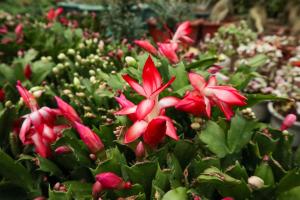How to Care for a Potted Mum Plant
If you're looking for an easy-to-grow plant that produces beautiful and colorful blooms, then the chrysanthemum or mum plant is an excellent choice. Not only do they require minimal maintenance, but they also come in various colors and sizes, making them a popular choice for indoor and outdoor decoration. In this article, we will discuss how to care for your potted mum plant and ensure it continues to thrive.
Choose the Right Location
The first thing you need to do is to choose the right location for your potted mum plant. Mums require plenty of sunlight, so choose a location that receives at least six hours of direct sunlight daily. Indoor plants should be placed close to a sunny window or under artificial grow lights. If you're planting outside, make sure the area is not too shaded by nearby trees or buildings that may block the light.
Watering and Fertilizing
Watering is a crucial part of caring for your mum plant. Newly planted mums should be watered frequently to help establish their roots. Once established, you can decrease the frequency of watering to once a week. Overwatering can cause root rot and other fungal diseases, so be careful not to let the soil become waterlogged.
Fertilizing your mum plant is also essential. Use a balanced fertilizer with equal amounts of nitrogen, phosphorus, and potassium to promote healthy growth and blooming. Apply the fertilizer every two weeks during the growing season, and reduce it during the winter months when the plant is dormant.
Pruning and Pinching
Pruning and pinching are essential to encourage bushy growth and more blooms. Pinch off the top inch of each stem when the seedlings are about 4-6 inches tall. This will encourage lateral branching and produce more blooms. Deadhead the spent blooms regularly to keep the plant looking tidy and to promote more flowering.
Prune your mum plant in early spring after the last frost. Cut the stems back to a few inches above the ground to encourage new growth. If your mum plant is an overwintered outdoor plant, you can also prune it in the fall to prevent it from becoming too tall and leggy, which can make it more susceptible to winter damage.
Pests and Diseases
Mum plants can be susceptible to pests and diseases, such as aphids, spider mites, and powdery mildew. Inspect your plant regularly for any signs of infestation, such as yellowing leaves or distorted growth. If you detect any issues, it's essential to treat them early to prevent them from spreading to other plants.
Use an organic pesticide or insecticidal soap to treat pests, and remove any infected leaves or stems immediately. To prevent common fungal diseases, make sure your mum plant has excellent air circulation and avoid overhead watering.
In Conclusion
Caring for a potted mum plant is relatively easy as long as you choose the right location, water and fertilize them correctly, and prune and pinch the plant regularly. With the right care, your mum plant can produce beautiful blooms year-round and add life and color to any room or garden.

 how many times do yo...
how many times do yo... how many planted tre...
how many planted tre... how many pine trees ...
how many pine trees ... how many pecan trees...
how many pecan trees... how many plants comp...
how many plants comp... how many plants can ...
how many plants can ... how many plants and ...
how many plants and ... how many pepper plan...
how many pepper plan...






























